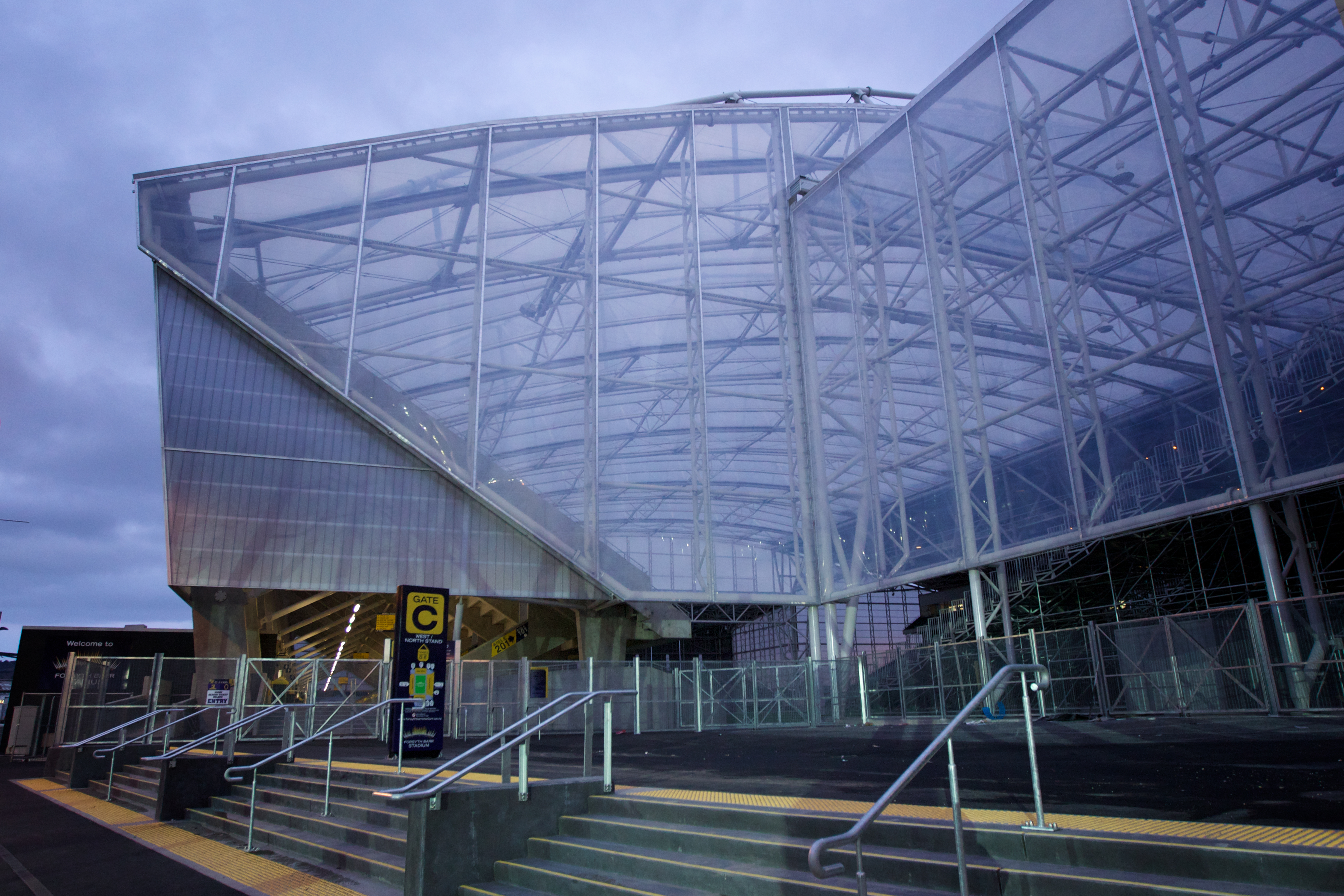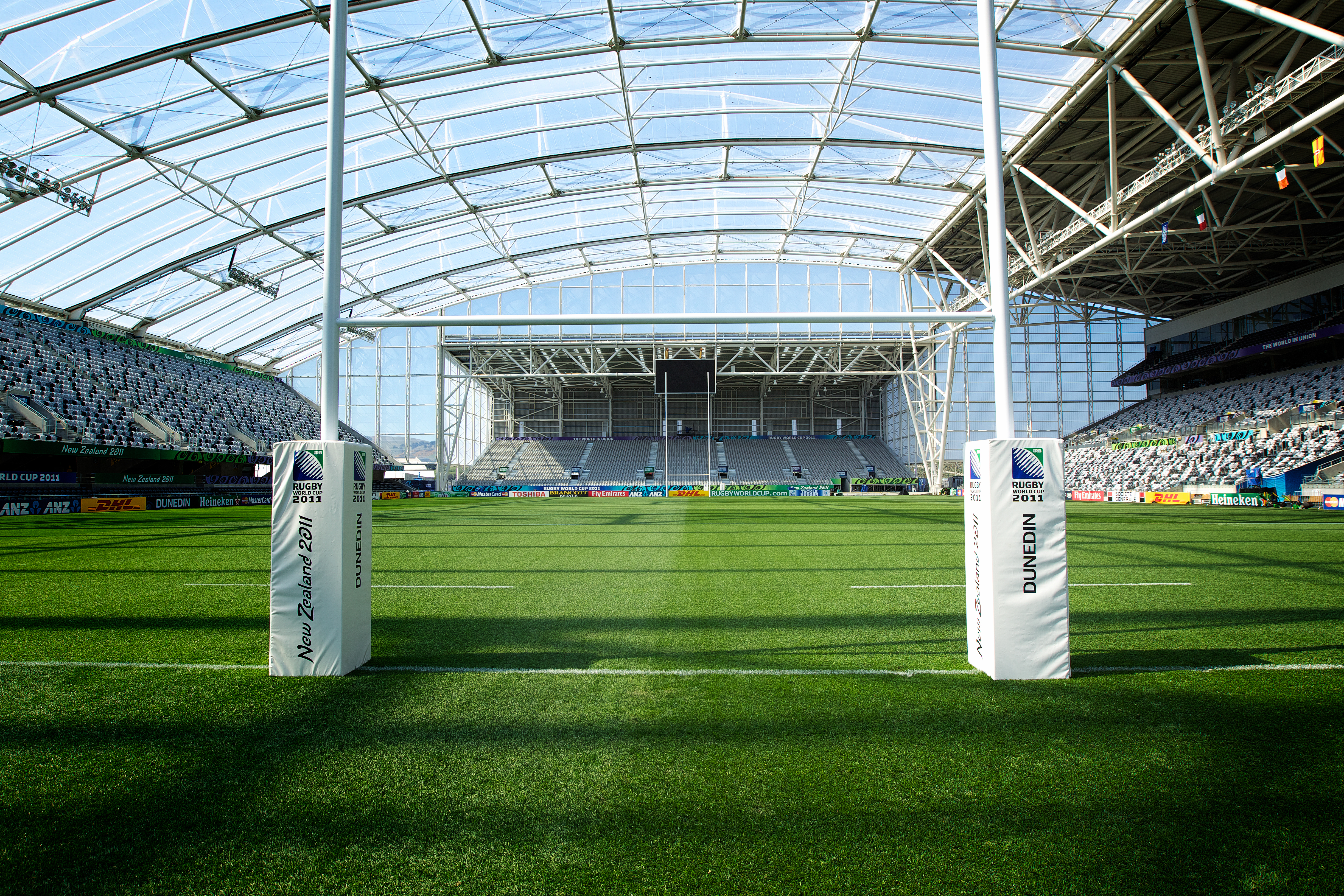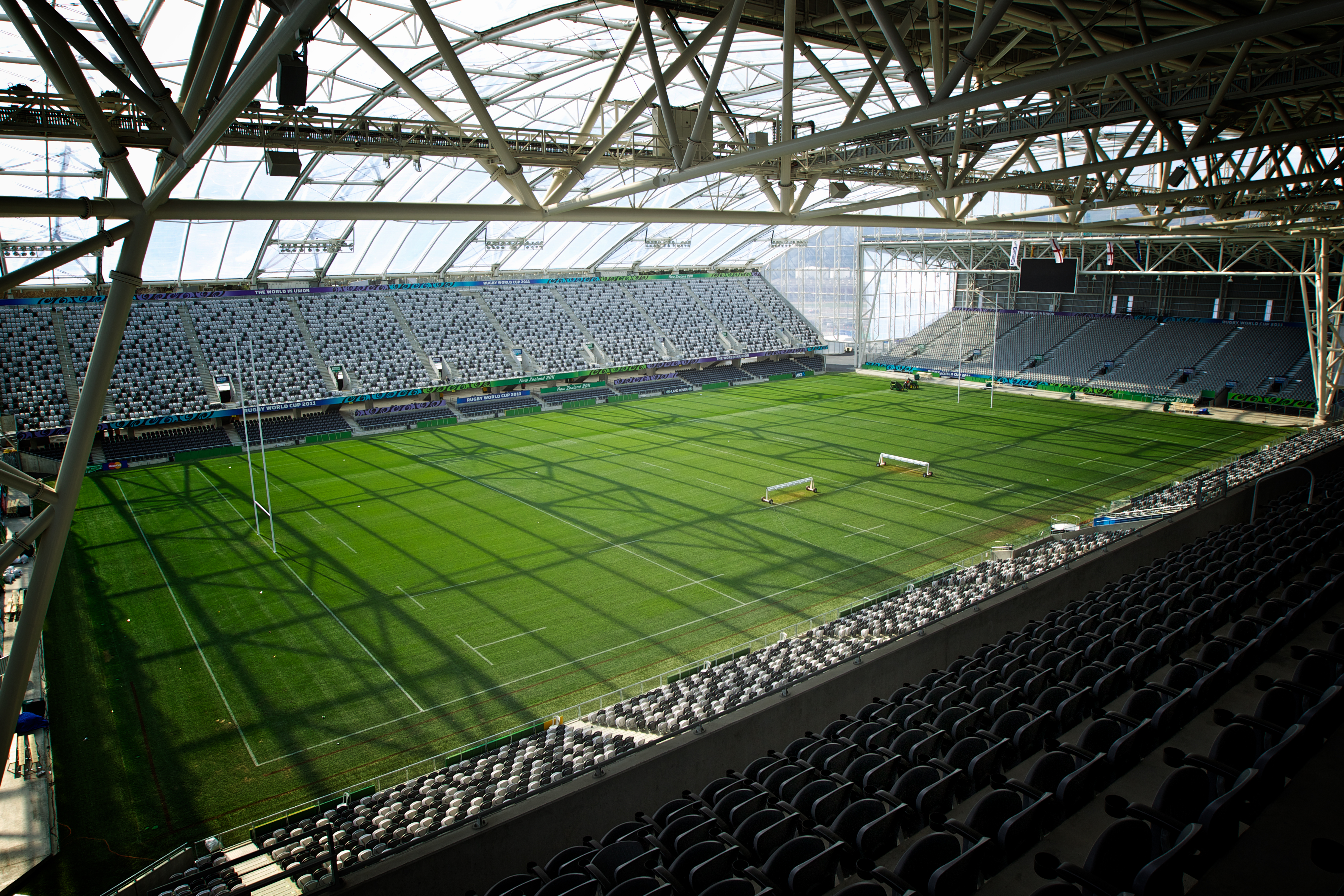New Zealand’s Revolutionary Forsyth Barr Stadium – a True Hybrid – to Function as both an International Sports Stadium and a World Class Entertainment Arena
August 1, 2011
-
Categories
Construction is complete at New Zealand’s Forsyth Barr stadium in Dunedin. The world’s only permanently enclosed, natural turf stadium with its space age transparent roof will hold its inaugural game of rugby on August 7, about a month ahead of the start of the 2011 Rugby World Cup.
The international architecture firm, Populous designed the innovative stadium in association with local firm Jasmax to replace the legendary Carisbrook House of Pain. Construction of the stadium with 20,000 permanent and 11,000 temporary seats has been completed on time and on budget, ahead of the World Cup tournament, when the stadium will host four games.
The unique roof is the result of extensive research by the design team. While ETFE (ethylene tetrafluoroethylene) is not a new product and was originally developed for the space industry, it is the first time its UV translucent properties have been put to use in a stadium, creating the largest ETFE covered structure in the Southern Hemisphere.
Populous senior principal and Project Director of Forsyth Barr stadium, Richard Breslin, said an essential ingredient in stadium design is legacy. The revolutionary design of Forsyth Barr provides the multifunctionality and flexibility so it is perfectly positioned to be used by its community all year round.
“New Zealanders are well known for their tenacity and innovation and that’s exactly what Forsyth Barr stadium is all about. Research by many people has created this final concept of a natural grass pitch growing under a permanent roof structure .The unique permanent roof is clad in EFTE, a transparent polymer or plastic, which is light, enclosed and translucent, allowing maximum sunlight onto the pitch, so that the grass keeps growing but the fans are protected from the elements and the action goes on whatever the weather. The permanent roof means Forsyth Barr is a true hybrid between a highly efficient, well functioning football/rugby stadium and an entertainment venue,” said Richard Breslin.
The stadium opens up the opportunities for the city of Dunedin. Not only does it now have the country’s largest rectangular stadium (as New Zealand’s other major stadia are all based around cricket and rugby), Forsyth Barr stadium will also be New Zealand’s largest indoor event venue, capable of hosting world class entertainment such as major concerts, performances and festivals. Its all round potential will be showcased by the singer songwriter Sir Elton John, who will stage the first concert at the stadium in November this year.
The rectangular design will also change the way we view the live game in New Zealand according to Richard Breslin.
“The angled seating pitch and enclosed roof will mean spectators are closer to the action than ever before and the atmosphere will be fantastic. I was there recently, and even though there was no game on, the sense of enclosure made the hairs stand up on the back of my neck. I could almost hear the noise, and the smell and feel of the atmosphere of the rival teams during that first big rugby match,” he said.
The stadium is located at the southern end of the South Island, and at latitude 42° south, it is the most southerly professional stadium in the world. Dunedin’s extreme cold and wet climate makes the roof an essential feature to encourage crowds to attend live events.
A team of turf experts, engineers and the stadium architects undertook rigorous studies over two years to understand the effects of grass growth under ETFE all year round, and an ETFE test rig was built on site to monitor grass growth both under the rig and outside it.
Populous Associate Principal, Ron Van Sluijs, project architect of Forsyth Barr stadium during its design phase, said the grass under the rig was healthier and stronger than the grass around it and the team is confidentthe grass will grow better at Forsyth Barr than it would at a similar unroofed stadium in Dunedin.
“The new roof means we can maintain a constant temperature and grow a stronger grass which will not become boggy because it will never rain, snow, or hail inside the stadium during a game at Forsyth Barr. This roof material allows for 90% of sunlight to still reach the pitch, along with UV light and fresh air.”
Project architect during the construction phase at Forsyth Barr, Populous Associate Jochem Veerman said the sectional profile of the stadium was carefully designed to maximise solar penetration onto the field as well as the natural ventilation.
“The ETFE covers the roof and parts of the facades, the stands on the Northern end are lower to allow maximum sun
light onto the pitch and the end facades are raised five metres so the stadium is open at these points, allowing natural ventilation of the grass, and to ensure spectators do not feel enclosed. There are also ventilation slots at a high level to ensure air circulates properly,” he said.
Forsyth Barr is one of three stadia Populous has designed for the Rugby World Cup; the others are New Zealand’s main stadium Eden Park in Auckland, which will host the semi finals and final of the competition and Westpac Stadium in Wellington which will host quarter finals.
Design Intent
- Forsyth Barr stadium is the world’s only permanently covered stadium to have a natural turf playing field. Construction began in June 2009 and will be complete August 1 2011.
- The key challenge for the design team was growing strong, healthy grass under a fixed roof. A team of turf experts, engineers and the stadium architects undertook rigorous studies over a two year period to understand the effects of grass growth under ETFE within the four seasons, and to ensure the pitch would be of a standard required for international sporting events.
- ETFE (ethylene tetrafluoroethylene) is a transparent polymer, originally developed for the space industry. The air filled two layer ETFE cladding has a light transparency of approximately 90% and has the unique quality of being UV transparent.
- It has been used to clad the stadium’s roof and facades. With 20,500 square metres of ETFE cladding, it is the largest ETFE covered structure in the Southern Hemisphere.
- ETFE is lighter than glass ( 1% of the weight) yet incredibly strong – able to bear 400 times its own weight and stretch to 3 times its length – which means it will handle the wind and snow of Dunedin’s cold southern climatic conditions.
- The design had to be created around parameters set by others. Following the two years of research, the stadium design was primarily dictated by the requirement to maximise sun strike levels and natural ventilation. The sectional profile of the stadium has been carefully designed to maximise the solar penetration onto the field as well as the natural ventilation of the playing surface.
- During the research and early design stages, an ETFE test rig was built on site to monitor grass growth both under the rig and outside it. Toward the end of the testing phase, it was discovered that the grass under the rig was stronger and healthier than the grass surrounding it, withstanding several high impact tests by local rugby.
- The innovative use of ETFE and the success of the grass growth sets a new benchmark for North American and Northern European venues for the feasibility of grass growth under an enclosed structure.
- The internal roof height is 37 metres.
- The stadium has been designed to function as New Zealand’s largest indoor arena as well as a sports stadium for rugby, rugby league and soccer.
- Stadium has 4 stands, 5 lounges and 21 corporate suites.
- As an arena, Forsyth Barr can hold 10,000 fans on the pitch plus seating in the stands.
- Stages can be set up either in the East stand or in front of the North Stand. The roof height means there is space for major theatrical productions requiring major rigging and stage structures.
- The stadium is master planned to create a truly urban stadium. The University of Otago is integrated into the western end of the ground, sharing a wall and some of the services and the NZ Academy of Sport will build their South Island headquarters at the northern side of the stadium.
Design Team
Architect & Interiors:
Populous in association with Jasmax
Client:
Carisbrook Stadium Trust
Operator:
Dunedin Venue Management
Project Management:
Arrow International
Construction:
Hawkins Construction
Structural Engineer:
Sinclair Knight Merz
Mechanical and electrical engineer:
Aurecon
Quantity surveyors:
Rawlinsons
Cladding:
Vector Foiltec ( ETFE); Politec ( polycarbonate); Dimond NZ ( metal cladding)
For more information please contact the Media team:
Bindi Perkins: +61 7 3839 9155 or bindi.perkins@populous.com
Michele Fleming: +61 7 3839 9155 or michele.fleming@populous.com


